Santosh Nannuru
Signal Processing and Communication Research Center, IIIT Hyderabad
Near-field 5D Pose Estimation using Reconfigurable Intelligent Surfaces
May 03, 2025Abstract:The advent of 6G is expected to enable many use cases which may rely on accurate knowledge of the location and orientation of user equipment (UE). The conventional localization methods suffer from limitations such as synchronization and high power consumption required for multiple active anchors. This can be mitigated by utilizing a large dimensional passive reconfigurable intelligent surface (RIS). This paper presents a novel low-complexity approach for the estimation of 5D pose (i.e. 3D location and 2D orientation) of a UE in near-field RIS-assisted multiple-input multiple-output (MIMO) systems. The proposed approach exploits the symmetric arrangement of uniform planar array of RIS and uniform linear array of UE to decouple the 5D problem into five 1D sub-problems. Further, we solve these sub-problems using a total least squares ESPRIT inspired approach to obtain closed-form solutions.
Graph learning methods to extract empathy supporting regions in a naturalistic stimuli fMRI
Mar 11, 2024Abstract:Functional MRI (fMRI) research, employing naturalistic stimuli like movies, explores brain network interactions in complex cognitive processes such as empathy. The empathy network encompasses multiple brain areas, including the Insula, PFC, ACC, and parietal regions. Our novel processing pipeline applies graph learning methods to whole-brain timeseries signals, incorporating high-pass filtering, voxel-level clustering, and windowed graph learning with a sparsity-based approach. The study involves two short movies shown to 14 healthy volunteers, considering 54 regions extracted from the AAL Atlas. The sparsity-based graph learning consistently outperforms, achieving over 88% accuracy in capturing emotion contagion variations. Temporal analysis reveals a gradual induction of empathy, supported by the method's effectiveness in capturing dynamic connectomes through graph clustering. Edge-weight dynamics analysis underscores sparsity-based learning's superiority, while connectome-network analysis highlights the pivotal role of the Insula, Amygdala, and Thalamus in empathy. Spectral filtering analysis emphasizes the band-pass filter's significance in isolating regions linked to emotional and empathetic processing during empathy HIGH states. Key regions like Amygdala, Insula, and Angular Gyrus consistently activate, supporting their critical role in immediate emotional responses. Strong similarities across movies in graph cluster labels, connectome-network analysis, and spectral filtering-based analyses reveal robust neural correlates of empathy. These findings advance our understanding of empathy-related neural dynamics and identify specific regions in empathetic responses, offering insights for targeted interventions and treatments associated with empathetic processing.
Localization of DOA trajectories -- Beyond the grid
Aug 14, 2023Abstract:The direction of arrival (DOA) estimation algorithms are crucial in localizing acoustic sources. Traditional localization methods rely on block-level processing to extract the directional information from multiple measurements processed together. However, these methods assume that DOA remains constant throughout the block, which may not be true in practical scenarios. Also, the performance of localization methods is limited when the true parameters do not lie on the parameter search grid. In this paper we propose two trajectory models, namely the polynomial and bandlimited trajectory models, to capture the DOA dynamics. To estimate trajectory parameters, we adopt two gridless algorithms: i) Sliding Frank-Wolfe (SFW), which solves the Beurling LASSO problem and ii) Newtonized Orthogonal Matching Pursuit (NOMP), which improves over OMP using cyclic refinement. Furthermore, we extend our analysis to include wideband processing. The simulation results indicate that the proposed trajectory localization algorithms exhibit improved performance compared to grid-based methods in terms of resolution, robustness to noise, and computational efficiency.
Improving trajectory localization accuracy via direction-of-arrival derivative estimation
Dec 10, 2022Abstract:Sound source localization is crucial in acoustic sensing and monitoring-related applications. In this paper, we do a comprehensive analysis of improvement in sound source localization by combining the direction of arrivals (DOAs) with their derivatives which quantify the changes in the positions of sources over time. This study uses the SALSA-Lite feature with a convolutional recurrent neural network (CRNN) model for predicting DOAs and their first-order derivatives. An update rule is introduced to combine the predicted DOAs with the estimated derivatives to obtain the final DOAs. The experimental validation is done using TAU-NIGENS Spatial Sound Events (TNSSE) 2021 dataset. We compare the performance of the networks predicting DOAs with derivative vs. the one predicting only the DOAs at low SNR levels. The results show that combining the derivatives with the DOAs improves the localization accuracy of moving sources.
Identifying Influential Pandemic Regions Using Graph Signal Variation
Nov 10, 2022


Abstract:Developing methods to analyse infection spread is an important step in the study of pandemic and containing them. The principal mode for geographical spreading of pandemics is the movement of population across regions. We are interested in identifying regions (cities, states, or countries) which are influential in aggressively spreading the disease to neighboring regions. We consider a meta-population network with SIR (Susceptible-Infected-Recovered) dynamics and develop graph signal-based metrics to identify influential regions. Specifically, a local variation and a temporal local variation metric is proposed. Simulations indicate usefulness of the local variation metrics over the global graph-based processing such as filtering.
Particle Flow Gaussian Sum Particle Filter
Nov 09, 2022



Abstract:Particle flow Gaussian particle flow (PFGPF) uses an invertible particle flow to generate a proposal density. It approximates the predictive and posterior distributions as Gaussian densities. In this paper, we use bank of PFGPF filters to construct a Particle flow Gaussian sum particle filter (PFGSPF), which approximates the predictive and posterior as Gaussian mixture model. This approximation is useful in complex estimation problems where a single Gaussian approximation is not sufficient. We compare the performance of this proposed filter with PFGPF and others in challenging numerical simulations.
Particle Flow Gaussian Particle Filter
Jul 04, 2022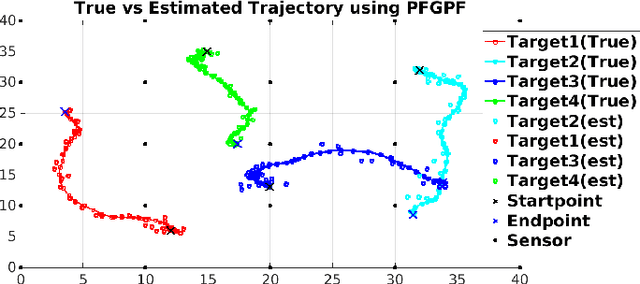
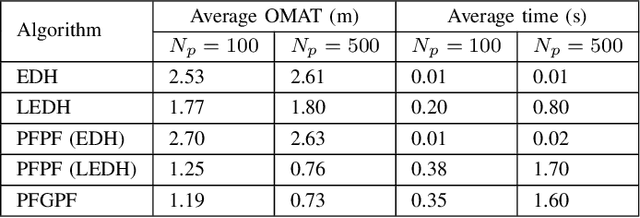
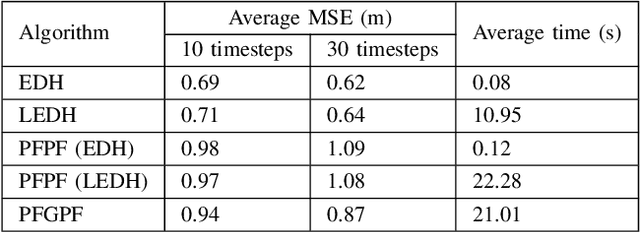
Abstract:State estimation in non-linear models is performed by tracking the posterior distribution recursively. A plethora of algorithms have been proposed for this task. Among them, the Gaussian particle filter uses a weighted set of particles to construct a Gaussian approximation to the posterior. In this paper, we propose to use invertible particle flow methods, derived under the Gaussian boundary conditions for a flow equation, to generate a proposal distribution close to the posterior. The resultant particle flow Gaussian particle filter (PFGPF) algorithm retains the asymptotic properties of Gaussian particle filters, with the potential for improved state estimation performance in high dimensional spaces. We compare the performance of PFGPF with the particle flow filters and particle flow particle filters in two challenging numerical simulation examples.
Parametric Models for DOA Trajectory Localization
Apr 20, 2022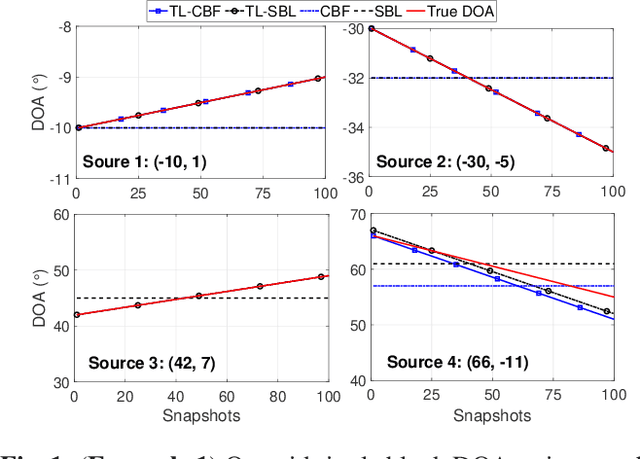
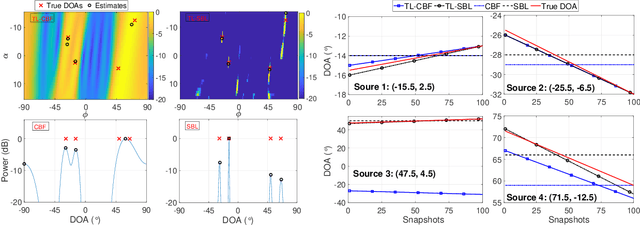
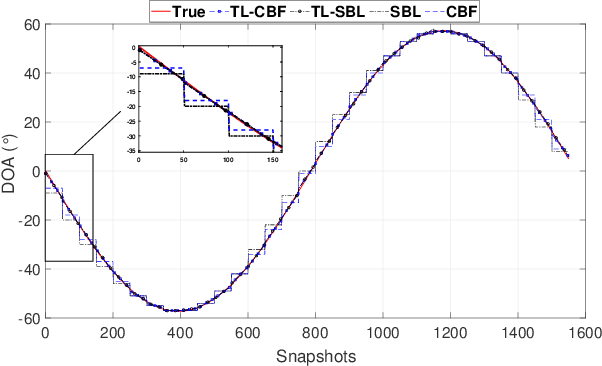
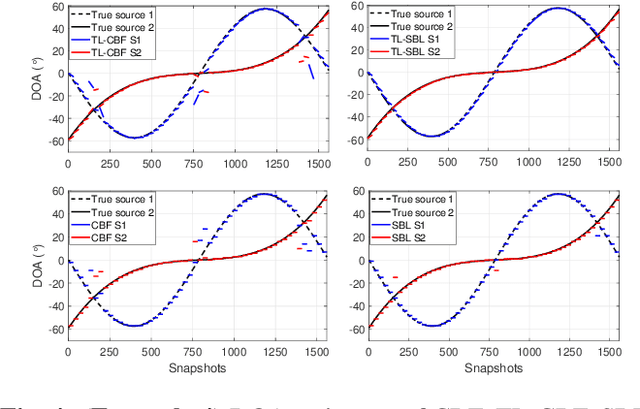
Abstract:Directions of arrival (DOA) estimation or localization of sources is an important problem in many applications for which numerous algorithms have been proposed. Most localization methods use block-level processing that combines multiple data snapshots to estimate DOA within a block. The DOAs are assumed to be constant within the block duration. However, these assumptions are often violated due to source motion. In this paper, we propose a signal model that captures the linear variations in DOA within a block. We applied conventional beamforming (CBF) algorithm to this model to estimate linear DOA trajectories. Further, we formulate the proposed signal model as a block sparse model and subsequently derive sparse Bayesian learning (SBL) algorithm. Our simulation results show that this linear parametric DOA model and corresponding algorithms capture the DOA trajectories for moving sources more accurately than traditional signal models and methods.
 Add to Chrome
Add to Chrome Add to Firefox
Add to Firefox Add to Edge
Add to Edge